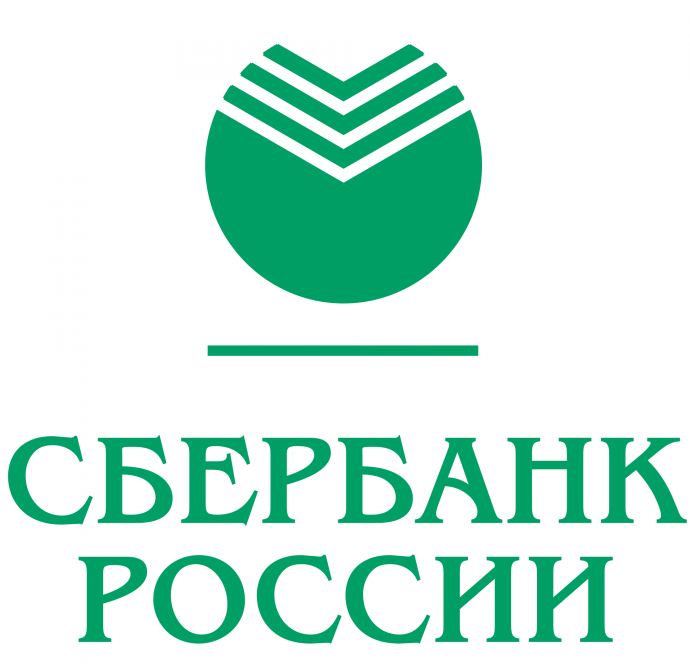The topic of this article is the history of Sberbank of Russia. Today it is the largest bank in the CIS. A quarter of the entire Russian banking system is covered by its assets. The share in bank capital is about 30%. The Banker (an authoritative magazine) conducted a study, according to which Sberbank was on July 1, 2008, at 33rd place in the list of the largest banks in the world in terms of fixed capital.

The history of Sberbank is very interesting. We will talk about the main periods of its development, about how he managed to establish himself at such high positions.
First Savings Bank
The history of Sberbank began with the decree of Nicholas I, who ordered in 1841 to create savings banks with banks in Moscow and St. Petersburg.

They were calculated, taking into account foreign experience, on insignificant contributions of the population, which the Treasury did not accept. Already in 1842 on March 1 in St. Petersburg at ul. Kazan, d.7 began its activities the first savings bank.
In order to explain to the common people the necessity and benefits of such institutions, advertising posters were previously issued. On the first day, 76 people opened bank accounts. 426.5 rubles amounted to the total amount of deposits. Popular newspapers in St. Petersburg published notes on this event. Sberkassa was also opened in Moscow.
Who was the first client of the savings bank?

Nikolay Kristofari is the first client of the savings bank. He contributed 10 rubles. I must say that at that time this amount was quite significant. For example, at 20 kopecks you could then buy 10 eggs. A very perspicacious and hardworking person was Christofari. He went through the loan treasury of St. Petersburg all the steps of the career ladder. The appearance on the threshold of the savings bank of this successful person was indicative.
Deposit limits and top managers
The deposit amount should initially be at least 50 kopecks. And the maximum investment amount was 300 rubles. However, up to 10 rubles could be deposited into a savings book at a time. A. Lavinsky became the first head of the savings bank. Y. Korchakovsky was in charge of direct operations. His salary was 700 rubles a year.
The initial function of savings banks

The savings bank, according to the Charter of 1841, had the right only to issue and accept money, charging interest. Later, the first national charter was developed for savings banks. I. Chertkov became its author. He drew up his project based on similar charters in force in Western Europe. Chertkov borrowed most of the elements from the German sample. This Charter reflected the concepts of the purpose and place of savings banks in the social and economic sphere that existed at that time.
Growth in the number of savings banks in Russia
The successful activities of the first such institutions led to their opening in various cities of the Russian Empire. Over 30 years, the number has increased several dozen times. There were 47 Sberkasses in 1865, and in 1895 there were already 3875 of them.
Difficulties encountered in the 2nd half of the 19th century
However, not everything in their activities was smooth. A lot of changes affecting various sectors of the state’s life brought the 2nd half of the 19th century. This affected, of course, and savings banks. The interest on deposits in 1957 decreased from 4 to 3%, and the number of customers decreased. Savings banks were transferred in 1860 to the Ministry of Finance. This connected them with the State Bank founded at the same time. Free cash amounts of savings banks were transferred there.
Further development of savings banks
The financial policy of the Russian Empire led to the fact that only these institutions could attract both small and large investors. And this, in turn, entailed the need to reform the savings banks. Institutions began to open at factories and plants, at the post office.
By the 80s of the 19th century, savings banks were not just institutions providing financial assistance to the population. The government began to use them also as a source of credit. This was a consequence of the policy pursued by J. Witte - Minister of Finance.
New Charter and its role in the activities of savings banks
The year 1895 became significant for the further development of savings banks. Nicholas II introduced a new charter. These institutions are now officially called state. But the most important thing was that the confidentiality of deposits was guaranteed to customers. Information about the state of the account could only be received by them, as well as their heirs and officials, according to a special decree. In addition, several types of deposits were identified, for example, in the name of children. He could get children when they came of age. There was also a contribution to the funeral and several other species. The state Savings Bank Office was established. The turn of the 19-20 century, thus, turned out to be the heyday of these institutions.

The fate of financial institutions after the October Revolution
Drastic changes having affected all branches of life, the October Revolution brought the country. Financial policies have also changed. Many institutions were liquidated, including mortgage banks, pawnshops, credit cooperatives. Securities were prohibited, insurance was canceled, as were mortgage agreements, and private banks were nationalized. All state debt abolished by the Bolsheviks. But the savings banks continued their activities. The government now had the right to confiscate the "excess" of cash accumulations, that is, "unearned profit." We no longer talked about the secret of deposits, previously unshakable. "War communism" led to restrictions and changes in the functioning of savings banks. They had to insure the life of citizens since November 1918, but this practice was already phased out by the end of next year.
Creation of labor savings banks
The deep crisis and high inflation led to the fact that all the savings of the population made in the pre-revolutionary years, in fact, were canceled. The soonest resuscitation was demanded by the financial sector. The Council of People's Commissars at the end of December decided to create labor savings banks. After that, the authorities began to pay quite a lot of attention to saving money. At this time, the government of the country tried to use the funds stored in savings banks for the needs of the industrial development of the state. The appointment of savings banks, initially the most important - the storage of money, as well as making profit from them, has now become secondary. The process of opening an account has been greatly simplified, which, together with a mass campaign, has led to an increase in the popularity of savings banks.
Expansion of services and networks of savings banks
In 1925, the Regulation on State Labor Savings Banks was created. It has greatly expanded the list of services that these institutions provided. Savings banks began to serve, for example, for the payment of certain types of pensions, money transfers, utility bills and other operations. Their network in the years to come expanded and acquired new functions.
Activities of savings banks in the pre-war and war years
Cash desks have become the only lending institution in the country since 1929. In general, their pre-war activities tended to gradually develop. Almost 43 thousand savings banks were counted by the beginning of the 40s. Their contributions helped finance military programs. The withdrawal limit was set during the Second World War. In a month it was impossible to withdraw more than 200 rubles. Savings banks have taken on some functions that are not typical for peacetime.
Post-war time in the fate of savings banks
The network of these institutions began to expand actively after 1945, especially in the countryside. The Charter of 1948, which spoke about the state guarantee of all deposits, attracted many new customers to savings banks.
Already in the 60s they accepted payments for utility bills and an apartment everywhere. In 1963, they became subordinate to the State Bank of the USSR, due to which the number of services rendered by them was again increased. The number of depositors and the total amount of deposits also continued to grow.
Creation of "Sberbank of the USSR"
In 1988, finally, the State Savings Bank became the "Sberbank of the USSR". Thus began the credit history of Sberbank. It was a government agency. The bank specialized in servicing legal entities and individuals. The history of Sberbank continued with the fact that the following year he became a member of the World Institute of Savings Banks.
The fate of "Sberbank" after the collapse of the USSR
Shareholders in 1991 created Joint-Stock Commercial "Sberbank of the Russian Federation." Of all the institutions after the collapse of the USSR, only he continued his existence. The history of Sberbank at that time was marked by the fact that it had to face many difficulties in the new conditions. However, he successfully dealt with them, thanks to the experience accumulated over many years.
The first card of Sberbank

The history of the Sberbank card began in 1990 in Moscow. Its first holder was Alexander Burkov, chairman of the board of this institution. Readers were first installed in the Dzerzhinsky branch in Moscow.
Sberbank today
Today, the history of Sberbank of Russia continues. It is the main financial support of our country. The Bank provides many services to individuals and legal entities, supports Olympic athletes, implements innovative programs. Thanks to this, it maintains its position and is among the leaders in the banking sector of Sberbank.

How to see loan history? This question is of interest to many today. The fact is that Sberbank most often refuses to provide loans to customers with a bad history. However, this information is open. Today, a special service “Credit History” is available for customers, which allows you to receive a document with information about the status of all credit obligations in other banks.
Not only in this way Sberbank takes care of its customers. The history of operations today is provided much more conveniently thanks to the Sberbank Online service. Using it is very simple and convenient. The history of the Sberbank card is under reliable protection, thanks to the registration system and one-time passwords. All account information is securely protected. Sberbank provides all these and many other services to its customers today. The history of credit in it is available to many residents of Russia.








